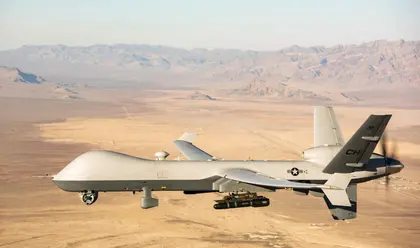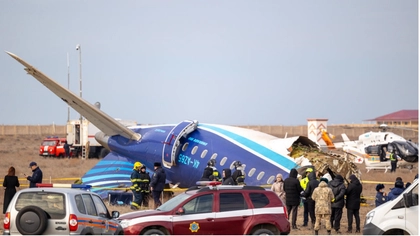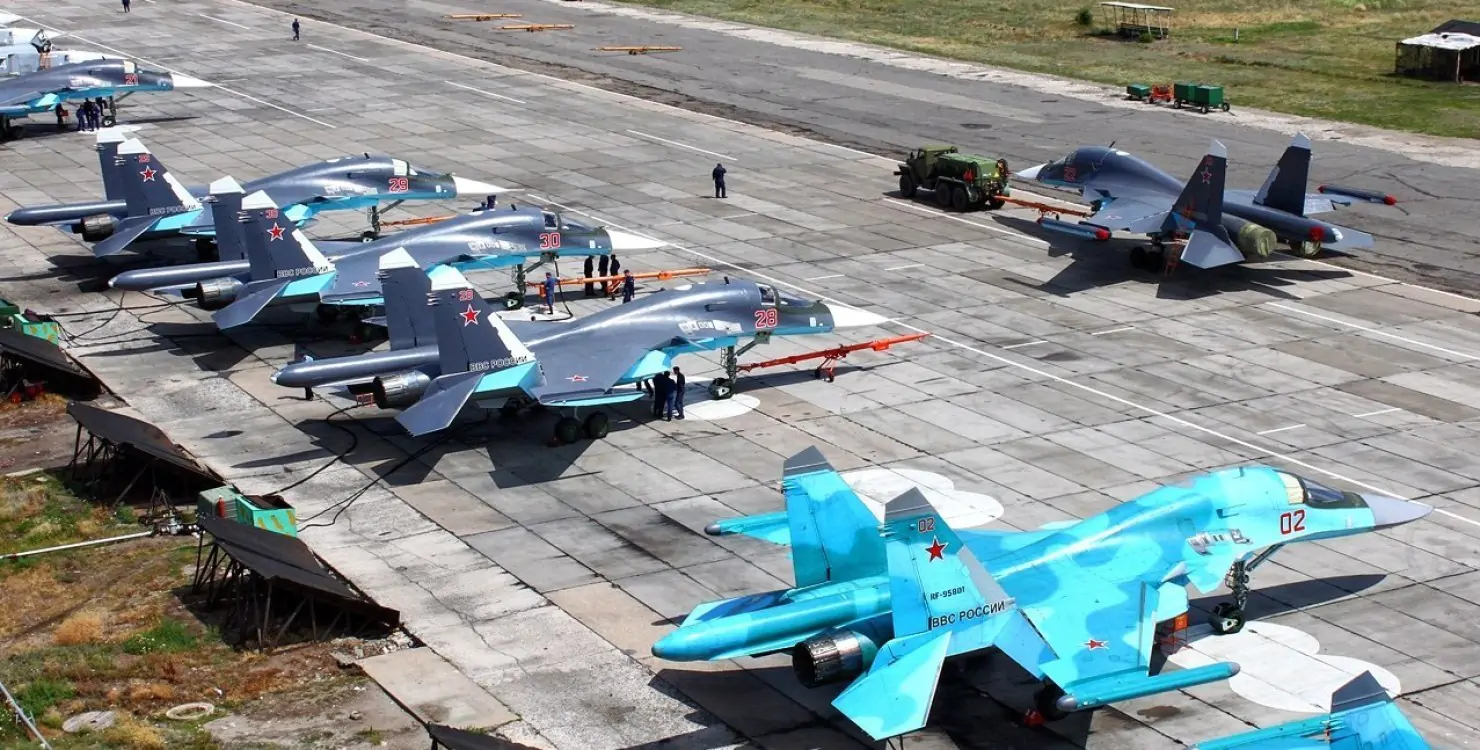A U.S. spy drone was forced to crash into the Black Sea on Tuesday after a Russian fighter jet dumped fuel on the unmanned aircraft and then collided with it, officials in Washington have announced.
Describing the incident as “reckless,” US European Command said two Russian Su-27 fighters intercepted the unmanned MQ-9 Reaper over international waters and one clipped its propeller.
JOIN US ON TELEGRAM
Follow our coverage of the war on the @Kyivpost_official.
"Several times before the collision, the Su-27s dumped fuel on and flew in front of the MQ-9 in a reckless, environmentally unsound and unprofessional manner," it said.
Pentagon spokesman Brigadier General Pat Ryder told journalists the drone was "unflyable and uncontrollable so we brought it down," adding that the collision also likely damaged the Russian aircraft, which he said was able to land following the incident
It is the first such “contact” between Russia and the U.S. since the Kremlin launched its full-scale invasion of Ukraine last year.
This sounds like a big deal with the potential to escalate into something very nasty?
As social media is awash with people screaming “World War 3!!!”, let’s address this issue right away.
Yes, it’s a relatively big deal but no, it is not going to lead to World War III. We’ll hand over to the Institute for the Study of War, who very calmly explain: “The incident will not cause an escalation to direct conflict between Russia and the US.

Russia to Scrap Missile Moratorium as US Deployments Expand
“Russian forces have used coercive signaling against US and allied flights and naval vessels for decades in multiple theatres without triggering conflict.
“The US and Russian presidents retain full freedom to choose how to respond to such incidents, and there is nothing automatic about escalation in such situations. Given President Joe Biden’s repeated commitments to avoid involving US forces in direct conflict with Russia and the Kremlin’s clear and repeatedly demonstrated reluctance to get into a war with NATO, there is no reason for incidents such as these to cause dangerous escalations.”
NATO diplomats in Brussels confirmed the incident, but said they did not expect it to immediately escalate into a further confrontation.
Phew. What is going to happen?
There’s already a blame game afoot, with Russia unsurprisingly refusing to take any responsibility.
Moscow denied causing the crash of the drone, which the Pentagon said was on a routine ISR (intelligence, surveillance, reconnaissance) mission.
"As a result of a sharp manoeuvre... the MQ-9 unmanned aerial vehicle entered an uncontrolled flight with loss of altitude and collided with the surface of the water," the Russian Defense Ministry said, adding that the two Russian jets had no contact with the US aircraft and did not use their weapons.
White House national security spokesman John Kirby later said: "Obviously, we refute the Russians' denial.”
The US State Department said it had summoned Russia's ambassador to protest. A Western military source, speaking to AFP on condition of anonymity, said that diplomatic channels between Russia and the United States could help limit any fall-out.
"To my mind, diplomatic channels will mitigate this," the source said.
Has Ukraine said anything?
Kyiv accused Russian leader Vladimir Putin on Wednesday of trying to widen the conflict in Ukraine.
"The incident with the American MQ-9 Reaper UAV – provoked by Russia over the Black Sea – is Putin's way of signalling his readiness to expand the conflict to involve other parties.
The purpose of this all-in tactic is to always be raising the stakes," Ukraine's National Security and Defence Council secretary Oleksiy Danilov said on social media.
Is this end of story?
Not quite – the U.S. is obviously very keen not to allow their hi-tech drone fall into enemy hands.
"Without getting into too much detail, what I can say is that we've taken steps to protect our equities with respect to that particular drone -– that particular aircraft," Kirby told CNN.
"We obviously don't want to see anybody getting their hands on it beyond us."
Has this type of incident happened before?
Russian intercepts over the Black Sea are common, Kirby told journalists in Washington, but this one "is noteworthy because of how unsafe and unprofessional it was, indeed reckless that it was".
Russia's invasion of Ukraine in February last year has led to heightened fears of a direct confrontation between Moscow and the NATO alliance, which has been arming Kyiv to help it defend itself.
Reports of a missile strike in eastern Poland in November briefly caused alarm before Western military sources concluded that it was a Ukrainian air defence missile, not a Russian one.
What was a U.S. drone doing flying over the Black Sea?
The United States uses MQ-9 Reapers for both surveillance and strikes and has long operated over the Black Sea keeping an eye on Russian naval forces.
"Our MQ-9 aircraft was conducting routine operations in international airspace when it was intercepted and hit by a Russian aircraft, resulting in a crash and complete loss of the MQ-9," said U.S. Air Force General James Hecker, commander of U.S. Air Forces Europe and Air Forces Africa.
"In fact, this unsafe and unprofessional act by the Russians nearly caused both aircraft to crash.
"US and allied aircraft will continue to operate in international airspace and we call on the Russians to conduct themselves professionally and safely," he added.
Several US Reapers have been lost in recent years, including to hostile fire. One was shot down in 2019 over Yemen with a surface-to-air missile fired by Huthi rebels, the US Central Command said at the time.
According to media reports, a US MQ-9 crashed in Libya in 2022, while another went down during a training exercise in Romania earlier in the same year.
Reapers can be armed with Hellfire missiles as well as laser-guided bombs and can fly for more than 1,100 miles (1,770 kilometres) at altitudes of up to 15,000 metres (50,000 feet), according to the US Air Force.
You can also highlight the text and press Ctrl + Enter






